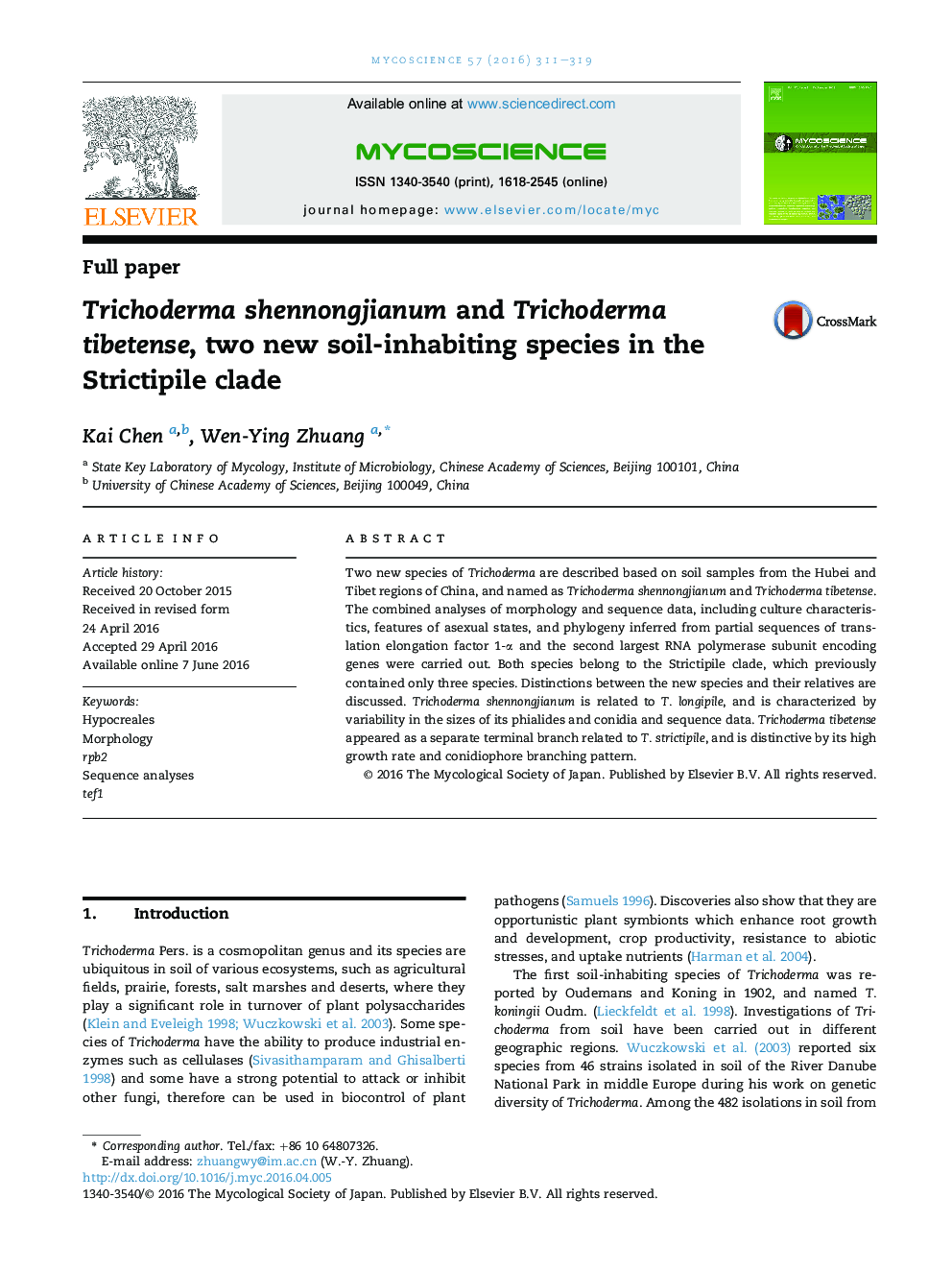| Article ID | Journal | Published Year | Pages | File Type |
|---|---|---|---|---|
| 2060056 | Mycoscience | 2016 | 9 Pages |
•Two new soil-inhabiting Trichoderma species are reported from China.•Their phylogenetic positions are explored based on analyses of rpb2 and tef1 gene sequences.•New primers are designed for amplification of Trichoderma rpb2 gene.
Two new species of Trichoderma are described based on soil samples from the Hubei and Tibet regions of China, and named as Trichoderma shennongjianum and Trichoderma tibetense. The combined analyses of morphology and sequence data, including culture characteristics, features of asexual states, and phylogeny inferred from partial sequences of translation elongation factor 1-α and the second largest RNA polymerase subunit encoding genes were carried out. Both species belong to the Strictipile clade, which previously contained only three species. Distinctions between the new species and their relatives are discussed. Trichoderma shennongjianum is related to T. longipile, and is characterized by variability in the sizes of its phialides and conidia and sequence data. Trichoderma tibetense appeared as a separate terminal branch related to T. strictipile, and is distinctive by its high growth rate and conidiophore branching pattern.
